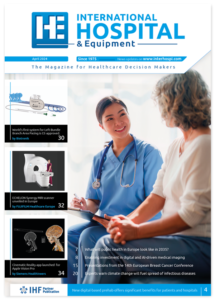Ageing populations are driving drug-resistant infection surge across Europe
A new modelling study analysing 12.8 million bloodstream infections reveals demographic shifts will substantially increase antimicrobial resistance burden by 2030, with men and older adults facing disproportionate risk. Researchers warn even aggressive interventions may fail to meet UN reduction targets for two-thirds of bacteria-antibiotic combinations.

Drug-resistant bacterial bloodstream infections are projected to increase substantially across Europe over the next five years, driven primarily by ageing populations rather than changes in antibiotic prescribing or infection control practices, according to research published on 4 November 2025 in PLOS Medicine.
The comprehensive modelling study, led by Gwenan Knight and Naomi Waterlow at the London School of Hygiene and Tropical Medicine, analysed 12,807,473 bloodstream infection susceptibility tests from 29 European countries between 2010 and 2019. Using sophisticated Bayesian hierarchical models combined with demographic projections, the researchers forecast antimicrobial resistance (AMR) trends through 2050.
Gender and age disparities emerge
The findings reveal striking disparities in future infection burden. Bloodstream infection rates are predicted to increase more in men than women across six of the eight bacteria studied, with only Pseudomonas aeruginosa and Enterococcus faecium showing different patterns. For Acinetobacter species, the female-to-male infection ratio decreases from 0.69 in 2022 to 0.66 in 2030.
Age-related differences prove even more pronounced. The steepest increases cluster in populations aged 74 and above, whilst rates in younger age groups—particularly 1-14 year olds, 30-44 year olds, and 45-59 year olds—stabilise or decline. The 90+ age group shows the fastest rising rates across all scenarios and bacterial species.
“Our study shows that the future burden of drug-resistant infections won’t be uniform—there will be substantial differences between countries, as well as across age groups and between sexes,” Knight explains. “We see the steepest increases in incidence projected in older age groups, particularly the over 65s, meaning that simply preventing further rises in resistant bloodstream infections would already be a major public health achievement.”
Importance of demographic disaggregation
When the research team compared models with and without age and sex disaggregation, they found differing resistance burden projections for 47% of bacteria-antibiotic combinations by 2030. Models lacking these demographic factors underestimated male cases for 76% of combinations and female cases for 11% of combinations.
“What I found most interesting was bringing together different strands of data to show the bigger picture,” Knight reflects. “Age and sex are still rarely considered in antimicrobial resistance projections, yet they make a real difference to who is most affected. Combining these factors with demographic and infection trends really highlighted how challenging it will be to reverse the steady rise in bloodstream infections across Europe.”
The study projects enormous variation across European countries, even for identical bacteria-antibiotic combinations. For aminoglycoside-resistant Acinetobacter species, projected changes by 2030 range from a 66% reduction in some countries to more than a fifteen-fold increase in others. Overall, 89% of bacteria-antibiotic-country combinations are projected to see increasing resistant case burdens by 2050.
UN targets prove challenging
The 2024 United Nations political declaration on AMR established a goal to reduce deaths from antimicrobial resistance by 10% globally by 2030. To assess feasibility, the researchers modelled intervention scenarios assuming reductions in bloodstream infection incidence rates of 1, 5, or 20 per 100,000 population per year starting in 2027.
Achieving a 10% reduction in resistant bloodstream infection incidence by 2030 proved possible for only 68.4% (26 of 38) bacteria-antibiotic combinations even under the most aggressive intervention scenario. The modest 1 per 100,000 reduction achieved the target for just 2.6% of combinations, whilst the 5 per 100,000 reduction reached it for 39.4%.
Several combinations that temporarily achieved the 10% reduction subsequently rebounded, with resistant infection burdens exceeding pre-intervention levels by 2050. “Even with strong public health interventions, reducing the rate of bloodstream infection by 10% will be hard to achieve for several bacteria-antibiotic combinations,” the authors conclude.
Clinical and policy implications
Co-author Catrin Moore from City St George’s, University of London, emphasises the study’s practical value: “This is a fantastic step forward in understanding the way that age and sex will influence the burden of drug-resistant infections in different European countries in the coming years. This will help us design intervention studies focusing on the populations most at risk in the future to reduce the mortality and morbidity associated with drug resistant infections.”
The findings suggest infection control resources concentrated in facilities serving elderly populations may yield disproportionate benefits. The authors argue that surveillance systems lacking age and sex granularity risk missing emerging hotspots, and that national action plans failing to account for local demographic profiles are likely to underperform.
The researchers acknowledge several limitations, including reliance on European data, exclusion of factors such as comorbidities and ethnicity, and assumptions that current trends will continue. Nevertheless, the methodological framework could be adapted to other regions with adequate surveillance data.
As Europe’s proportion of residents aged 65+ climbs towards 30% by 2050, the demographic pressures driving AMR burden will intensify. The study’s central message is clear: Europe faces a growing AMR crisis shaped fundamentally by population age structure, requiring demographically-informed intervention strategies.
Reference
Waterlow, N. R., Chandler, C. I. R., Cooper, B. S., et. al. (2025). Combining demographic shifts with age-based resistance prevalence to estimate future antimicrobial resistance burden in Europe and implications for targets: A modelling study. PLOS Medicine, 22(11), e1004579. https://doi.org/10.1371/journal.pmed.1004579

